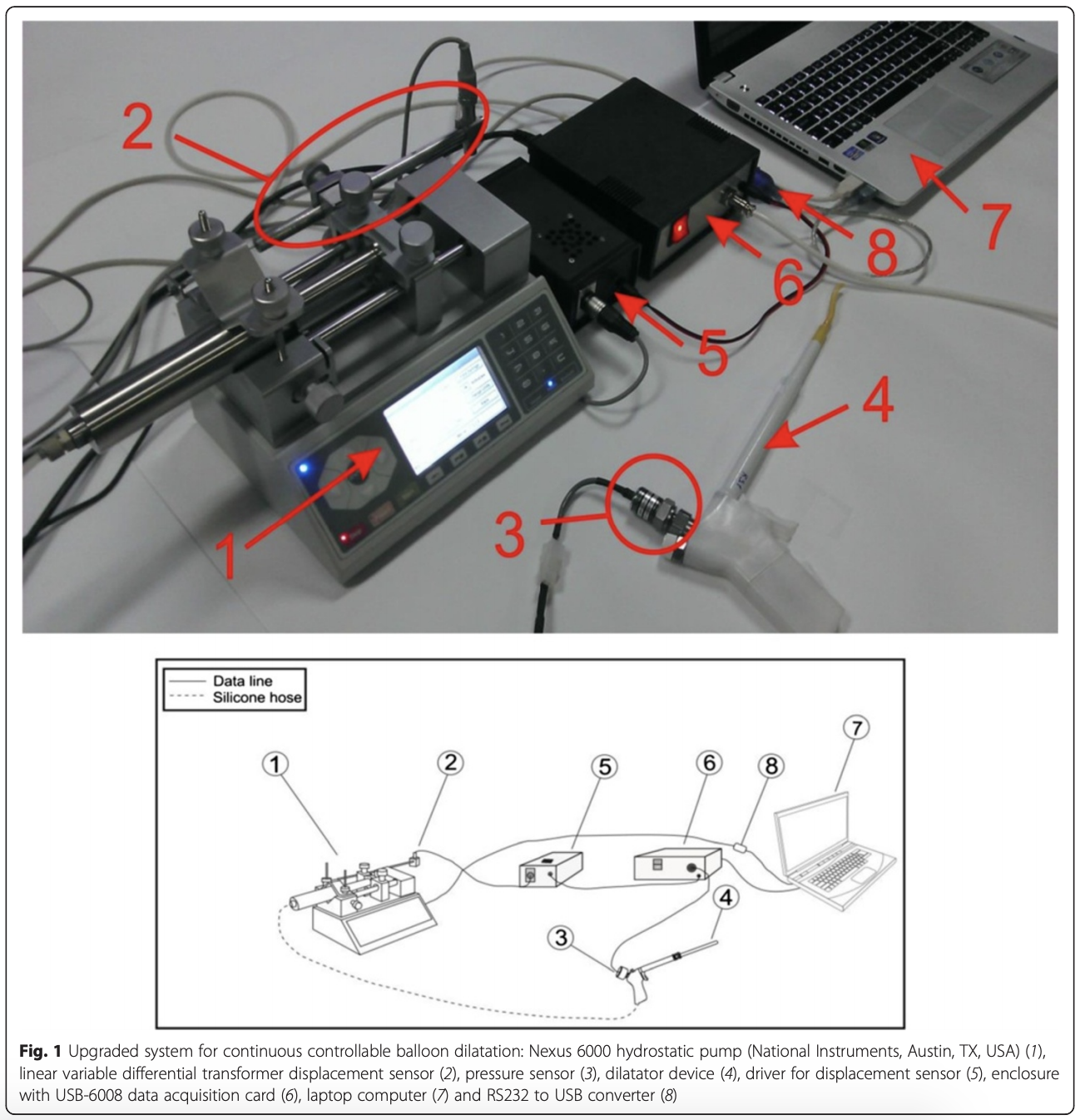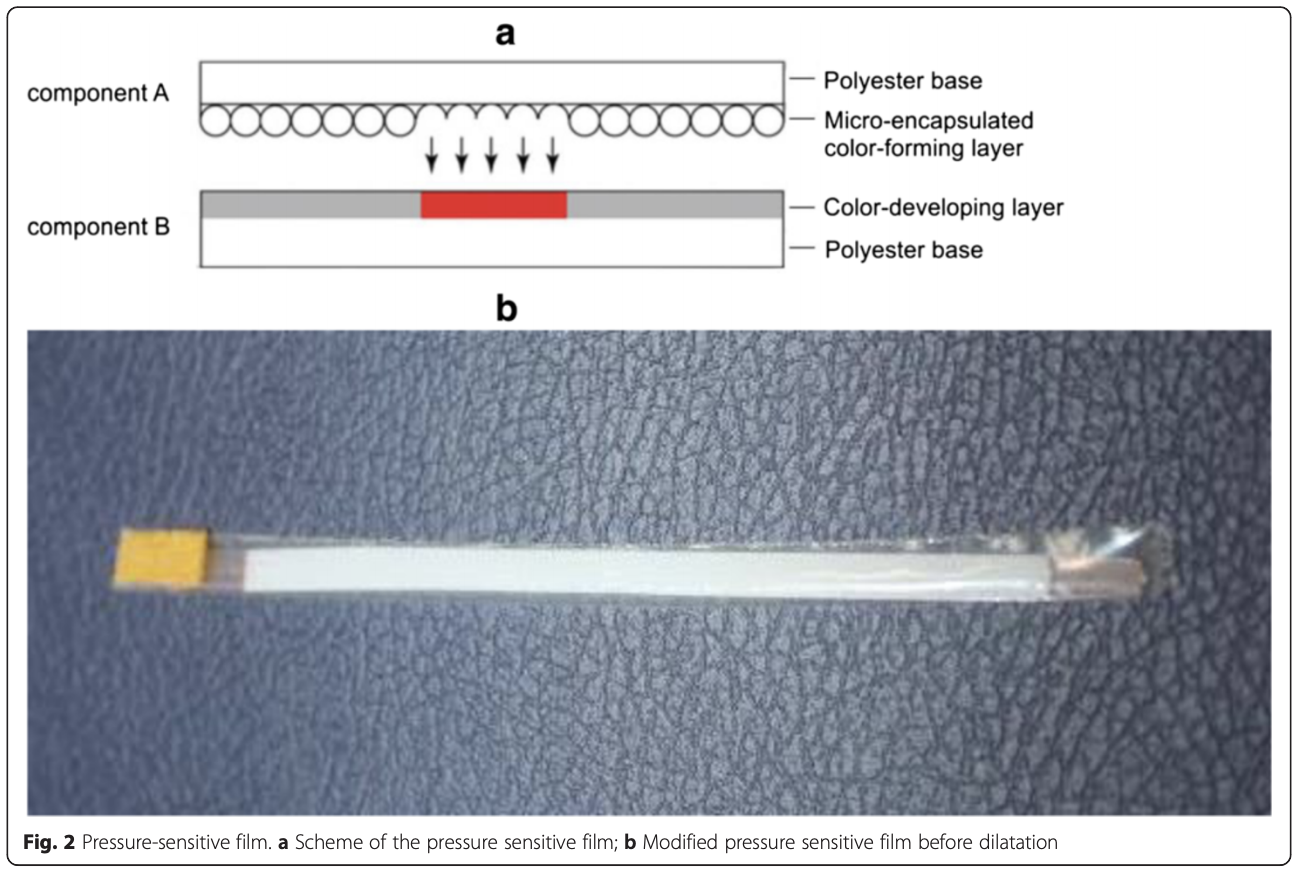Study methods For the purpose of our research, we modified and upgraded the system for CCBD [11]. In the upgraded CCBD system, controllability over the process of dilatation is met on two levels: control over the maximum diameter of dilatation and control of the parameters of the dilatation process (i.e., pressure in the balloon extension, dilatation speed). These two levels of control are reached by using the Nexus 6000 Syringe Pump (Chemyx, Stafford, TX, USA) and our original software application that allows the dilatation process to operate under strictly controlled conditions (dilatation process lasted 100 seconds; pressure in the balloon extension did not exceed 2 MPa). The tracking and measurement of the dilatation parameters were performed by the pressure sensor, which is located on the dilatator device, as well as by the displacement sensor, which is attached to the hydrostatic pump, as shown in Fig. 1.

In our aim to precisely measure and basically map the resistance along the cervical canal during CCBD, we used the following pressure-sensitive films (PSFs): FUJIFILM Ultra Super Low Pressure (Fujifilm, Tokyo, Japan). Under the influence of external force on the PSF, microcapsules in component A of the film rupture and the released red paint is absorbed by the special material in component B, as shown in Fig. 2a. The width of the PSF used in our study was 3 mm and the length was 70 mm. Adhesive tape was placed at both ends of the PSF to keep components A and B together during the experiment. We also placed adhesive tape at the top ends of the PSF to avoid their movement during placement of the balloon extension in the cervical canal, as shown in Fig. 2b. Owing to the presence of cervical mucus and blood during the experiment, we had to isolate our PSF with transparent plastic foil. Finally, in every experiment, we used two PSFs, which were placed on the top and the bottom, respectively, of the balloon extension of the CCBD system.

After completion of dilatation, the PSFs were collected, scanned and converted into their respective digital forms, which were further analysed using the MATLAB program (MathWorks, Natick, MA, USA). The final versions of the processed PSFs are displayed in the Results section.
